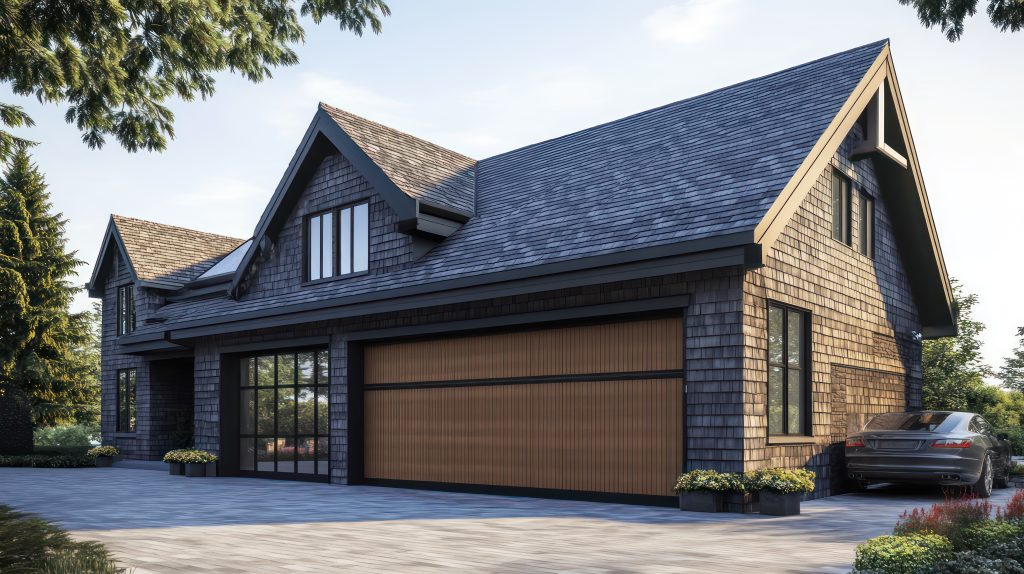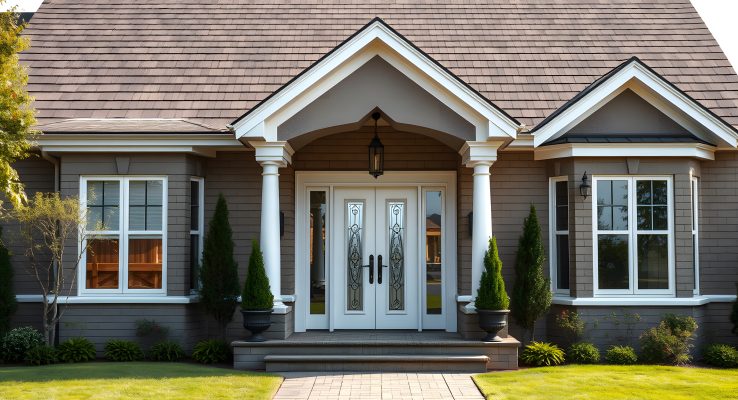Choosing the Best Siding Material for Your Climate
When it comes to choosing siding for your home, climate plays a critical role. The ideal siding material not only complements your home’s design but also withstands local weather conditions, ensuring longevity and maintaining energy efficiency. Here’s a look at various siding materials and which climates they best serve, along with some tips to help you make an informed decision.
Why Climate Matters in Siding Selection
Every siding material has unique properties that interact differently with environmental factors like temperature, humidity, precipitation, and UV exposure. When your siding matches your climate, it minimizes maintenance, increases your home’s energy efficiency, and extends the siding’s lifespan. Choosing the right material for your region means fewer repairs and lower energy costs, so it’s worth exploring what each option has to offer.
1. Vinyl Siding – A Versatile Option
Vinyl siding is one of the most popular choices across a wide range of climates due to its durability, low maintenance, and affordability. This material can handle fluctuating temperatures and is available in insulated versions that add an extra layer of protection against extreme heat and cold.
- Best for: Moderate climates, though insulated vinyl works well in colder areas.
- Pros: Low maintenance, affordable, moisture-resistant.
- Cons: Not ideal for extreme temperatures; can warp under excessive heat or crack in severe cold.
2. Fiber Cement Siding – Moisture and Fire Resistant
Fiber cement siding, made from a blend of cement, sand, and cellulose fibers, is highly durable and resistant to fire, insects, and moisture. This makes it particularly useful in areas with high humidity, coastal conditions, or wildfire risk.
- Best for: Humid, coastal, or fire-prone regions.
- Pros: Fire-resistant, durable, low maintenance.
- Cons: Heavier and more expensive to install; can be less energy-efficient.
3. Wood Siding – A Natural Insulator
Wood siding is a classic choice, loved for its warm, natural look. It’s also a good insulator, which can be helpful in colder regions. However, wood requires regular maintenance to prevent rot, especially in moist environments. For homeowners willing to invest time in upkeep, wood offers timeless appeal and energy efficiency.
- Best for: Drier, colder climates.
- Pros: Natural insulation, aesthetically appealing.
- Cons: High maintenance, vulnerable to moisture and insects if untreated.

4. Metal Siding – Durable and Weather Resistant
Metal siding, often made of aluminum or steel, is highly durable and performs well in areas prone to wildfires or high winds. It’s resistant to rot, insects, and fire, making it a reliable choice in extreme conditions. However, metal can retain heat, making it less ideal for very hot climates unless insulated.
- Best for: Fire-prone or windy regions; also suitable for coastal areas.
- Pros: Fire-resistant, low maintenance, durable.
- Cons: Can be noisy, retains heat, prone to denting.
5. Stucco Siding – Perfect for Hot, Dry Regions
Stucco siding is a popular choice in the Southwest and other dry climates. It’s excellent for areas with minimal rainfall, as it doesn’t fare well in very wet conditions. Stucco is energy-efficient and resistant to fire, making it a great choice for hot, arid regions.
- Best for: Hot, dry climates.
- Pros: Fire-resistant, energy-efficient, durable in dry environments.
- Cons: Not suitable for wet or humid climates, can crack over time.
6. Brick Siding – Classic and Energy Efficient
Brick siding has been used for centuries and remains popular for its durability and thermal properties. It’s particularly effective in both hot and cold climates, thanks to its natural ability to regulate indoor temperatures. Brick is also resistant to fire and pests, making it a reliable choice in various regions.
- Best for: Most climates, especially those with temperature extremes.
- Pros: Highly durable, fire-resistant, excellent insulator.
- Cons: Expensive, heavy, labor-intensive to install.
7. Engineered Wood Siding – A Modern, Resilient Choice
Engineered wood siding is designed to look like natural wood but with improved durability and moisture resistance. It’s lighter than fiber cement and requires less maintenance than traditional wood, making it a good choice for homeowners seeking a balance between aesthetics and resilience.
- Best for: Moderate to cold climates.
- Pros: Durable, low maintenance, moisture-resistant.
- Cons: Not as fire-resistant as fiber cement or metal siding.
Tips for Choosing the Best Siding for Your Climate
- Assess Local Weather Patterns: Understanding the primary challenges of your region—whether it’s extreme heat, humidity, cold, or wind—will guide your selection.
- Consider Insulation Needs: In colder climates, look for siding that provides good insulation or can be paired with additional insulation.
- Plan for Maintenance: Be honest about the level of maintenance you’re willing to commit to. Materials like vinyl and fiber cement require less upkeep than wood, for example.
- Factor in Cost vs. Longevity: While some materials are more expensive upfront, they may save money over time due to increased durability and energy efficiency.
Conclusion
Choosing the best siding for your climate is a crucial decision for any homeowner. By considering the unique advantages of each material in relation to your local weather, you can select siding that offers durability, energy efficiency, and aesthetic appeal. Investing in the right siding can protect your home from the elements, improve its appearance, and even increase its value. Consulting with a professional siding installer can also help you weigh your options and choose a material that’s best suited for your region and lifestyle.
